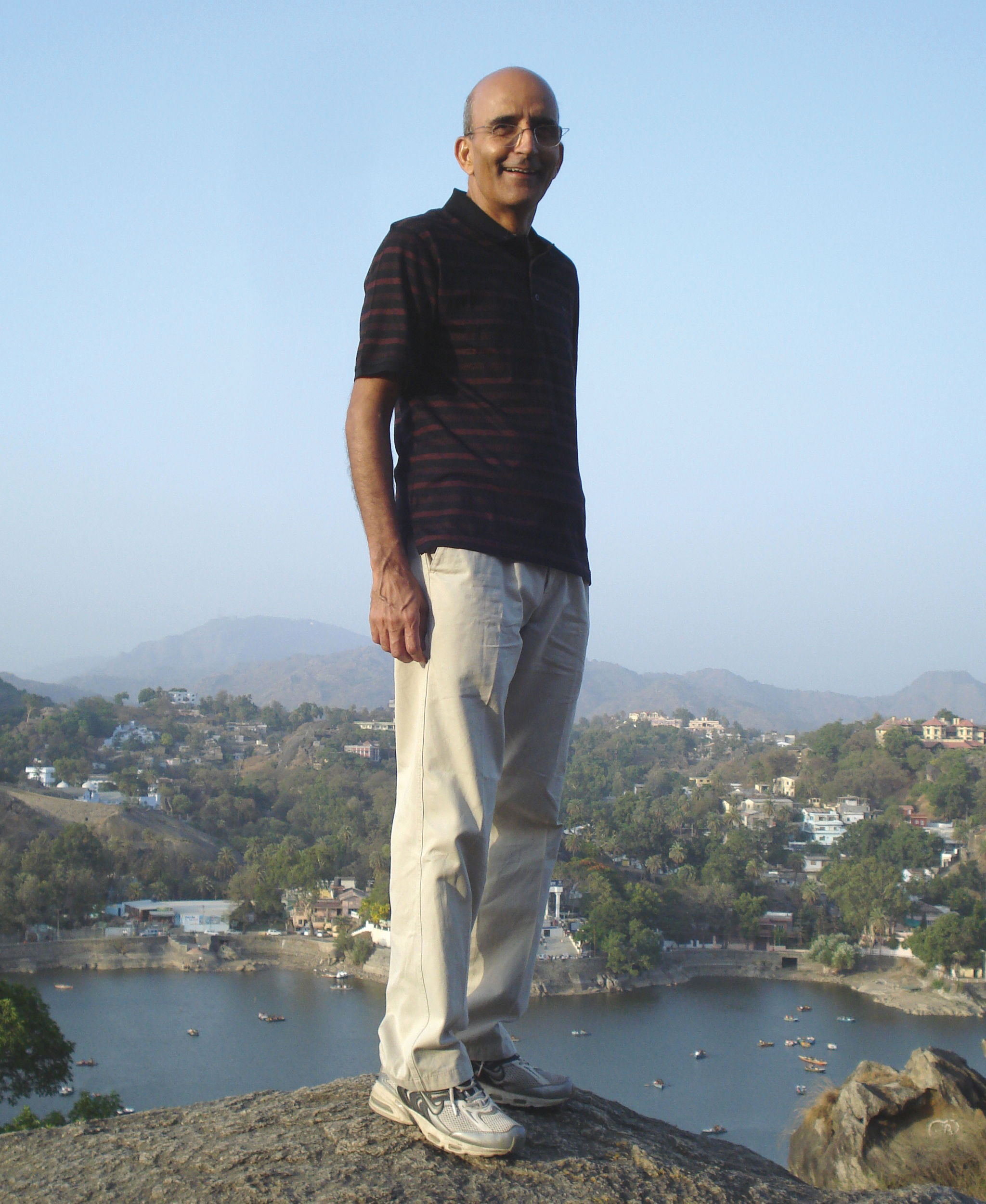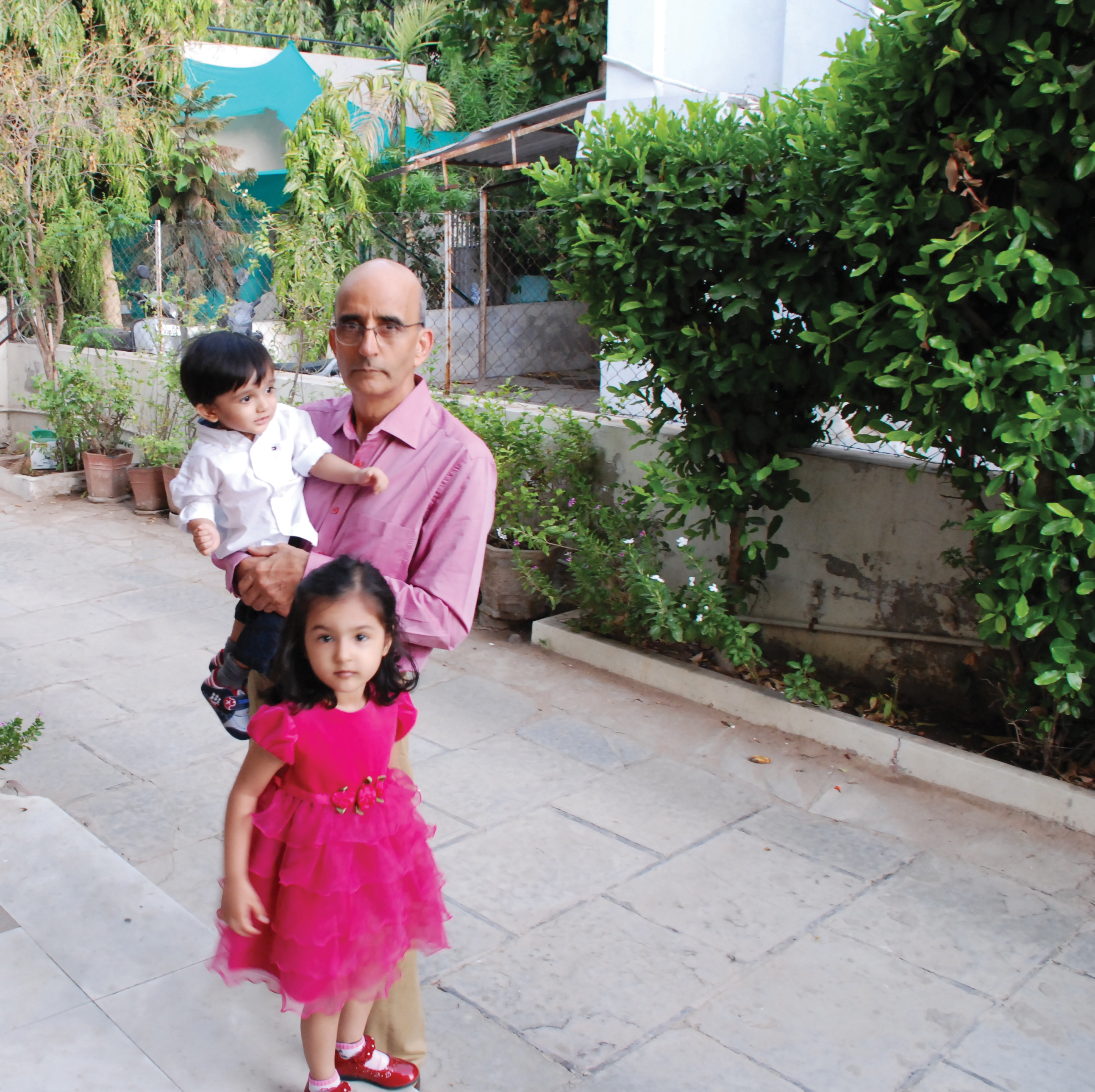
Getting to Know You
Currently, what book are you reading, what TV series are you binge-watching, what app do you use the most, and where do you get your daily news?
Book: I must admit that, other than in ophthalmology, I am not reading much. In fact, I have even stopped reading the newspapers because I feel there is not much positive news to read early in the morning.
TV series: [No response]
App: [No response]
Daily news: I find traveling and interacting with people around me to be much more stimulating and informative than daily news. That is where I get my updates.
What is something in your life you would happily do again, and what is something you would never do again?
Happily do again: I think ophthalmology is something I can keep doing again and again.
Never do again: I do not believe in shying away from anything, so, really, there is nothing I would never do again. I like to take up challenges in all fields of life.
What are three places at the top of your bucket list?
No. 1: To explore the Himalayas.
No. 2: To go back and visit my hometown.
No. 3: To explore the underwater life along the Gold Coast in Australia.
If you had to donate half your income tomorrow, to whom would you give it?
The two most important priorities for me are pediatric eye disease treatment and basic research. In fact, for the past 20 years, I have channeled my own hard-earned income and single-handedly set up a research facility for disorders of the lens, the Iladevi Cataract & IOL Research Centre, through which we hope to attempt to solve some of the unsolved mysteries in the eye. I am also passionate about treating underprivileged children affected by cataracts and other eye diseases, and, therefore, I have been giving free treatment to these patients at my hospital for the past 30 years. Given another chance, I would do the same things.
If there is one high-risk thing that you have not done but remain curious about, what is it?
Climbing Mount Everest. I know that I will never be able to do this because of the risks involved, but it is something that has always intrigued me.


Your Thoughts on Ophthalmology
What is the health care landscape like in your country?
Health care in India unfortunately is not uniform and has inequitable distribution. In bigger towns and cities, the health care available is on par with the care anywhere in the world. However, penetration of health care to the most rural areas and the poorer segments of society is unsatisfactory. Although there is a robust public health system in the country, with government hospitals in most districts and subdistricts, the quality of care available in these facilities is variable. There is still a huge unmet need to provide the best level of care for all eye diseases in the rural and the socially and economically underprivileged areas of the country.
How enthusiastic are you about the future of ophthalmology?
I think the best medical specialty to take up right now is ophthalmology. It requires a blend of diagnostic, surgical, and technological skills, and it offers almost unparalleled job satisfaction. There are many exciting innovations on the horizon, particularly in the area of presbyopia management. Also, with improving techniques and technologies, the management of cataracts in patients with comorbidities (eg, corneal or retinal diseases or glaucoma) is looking much more promising. In the future, we will see more microinvasive surgery, and, who knows, perhaps even a nonsurgical solution to cataract.
What products in the pipeline excite you the most?
I am currently excited about IOL technologies that help to address presbyopia, particularly trifocal IOL designs, as well as the possibility of light-adjustable IOLs. It would be a great help to have an IOL technology that would allow us to titrate our refractive outcomes.
What recent studies or technologies have influenced your surgical technique?
As I use femtosecond laser technology for cataract surgery more often, I realize that its utility is not just to create a round capsulotomy; there are many complex scenarios in which it is useful. In particular, for posterior polar cataracts, I now perform femtodelineation; and in white, mature cataracts, I am almost guaranteed a perfect, centered capsulotomy. Second, for pediatric and traumatic cataracts, I find optic capture of the IOL through a posterior capsulorrhexis useful because it allows me to achieve excellent IOL centration and stability.
What was the toughest decision you have had to make as an ophthalmologist?
The toughest situations for me are when children present with bilateral retinoblastoma and we have to talk to the parents about this sight- and life-threatening disease that often carries with it the necessity of enucleating both eyes. These situations are heartbreaking for us, the caregivers, as well as for the parents.
How has ophthalmology changed since you started practicing?
When I started my ophthalmic practice in the late 1970s, we routinely used magnifying loupes and performed intracapsular cataract extraction (ICCE). Ophthalmic practice meant having a flashlight and an indirect ophthalmoscope. From that time until today, there have been major paradigm shifts in techniques and technologies, notably from ICCE to extracapsular cataract extraction (ECCE), and then from ECCE to phacoemulsification. Further, the amount of information that diagnostic technologies are able to provide today is phenomenal. This has made our understanding of all ocular diseases much clearer and has opened new dimensions in treatment. The advent of microincision surgeries in all ophthalmic subspecialties has caused a sea change, not just in the surgical techniques themselves, but also in improved outcomes.
What advice can you offer the new generation of ophthalmologists?
First and foremost: Master the art and science of ophthalmology because, at the end of the day, there is nothing to beat a good clinician. Second, I would like to spread the message of curiosity and the need to pursue basic and clinical research. It is only through research that personal and professional growth is possible, so we must always have an open mind and never stop questioning everything we come across. Last but not least, be dedicated to what you do, and remember that across the slit lamp from you is another individual just like you.
If you could trade lives with a fellow ophthalmologist for 1 day, who would it be and why?
This is a hard question to answer, but if there is one person I would love to trade lives with for a day, it would be my late father. He was also an ophthalmologist, and his work inspired me to follow in his footsteps. He was also a noble soul, and, all his life, he worked to serve the poor and needy people in a small village. Despite his remote location, he was well ahead of his time when it came to treating his patients. If I could undertake the kind of service he did, even for 1 day, I would consider it a great privilege.
If you were forced to limit your practice of ophthalmology to one procedure, what procedure would you choose and why?
The one procedure that I have chosen for myself since 1987 is the management of cataracts in adults and children. I realized early in my career that cataract surgery is seldom considered a specialist’s job, particularly in the part of the world in which I practice. Having a keen interest in the subject, I have narrowed my focus to the practice of complex cataract surgery.


Your Thoughts on Business
What differentiates your practice from those of your competitors?
I think what differentiates my practice is the fact that our entire team of medical and paramedical staff strives to provide the highest quality care to every patient, and to do so with a human touch. Another thing that helps to differentiate us is that we provide customized, made-for-you solutions for all individuals, taking into account their lifestyle as well as their eyes. It is also important for us, as for every practice, to keep updated and adapt to the changing practice paradigms.
How do you feel about private equity, and is there a place for it in ophthalmology?
No comments because this is not an area I understand much.
How do you approach marketing your practice and specific procedures you offer?
I believe that word-of-mouth marketing through satisfied and happy patients is the best marketing tool one can have. Having said that, as times are changing, it is important that every practice is internet-savvy and uses social media, websites, and other tools to reach out to people. I am not a big believer in print advertising.
How do you or your practice keep staff members happy?
One of the biggest assets for any practice is a staff that works toward enhancing the patient experience. Respecting every staff member, giving each the opportunity to grow his or her talents, and maintaining a congenial work atmosphere are the keys to developing and retaining a happy staff. It is actually pretty basic: Lead by example, and your staff will follow.
What is your end game?
My end game is to be truthful to my patients and give them the best that I can. Leave no stone unturned in giving the best possible treatment to every patient. I believe once you do that, success is guaranteed.


